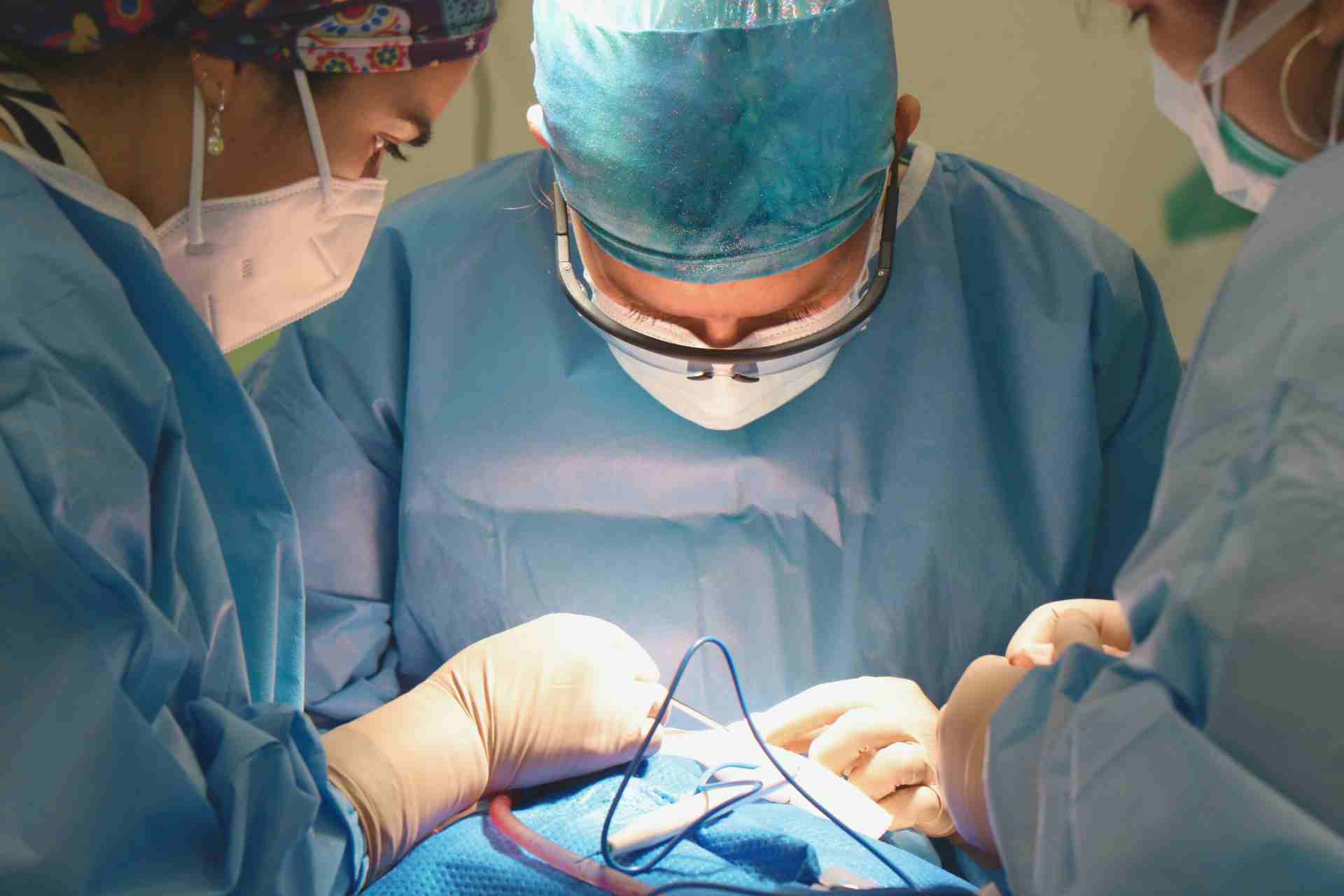Highlights:
- Alveoloplasty is a minor surgical procedure that reshapes your jawbone after extractions.
- It helps smooth sharp bone edges and prepares your mouth for dentures or implants.
- Often done at the same time as extractions to promote faster, more comfortable healing.
- Recovery is short and manageable—most patients heal well with basic aftercare.
- Your dentist will recommend it only if it benefits long-term comfort or oral health.
What Is Alveoloplasty?
Let’s keep it simple
Alveoloplasty is a quick, minor oral surgery where your dentist reshapes the bone in your jaw. It usually happens after a tooth—or a few—has been taken out.
Why? Because the bone that’s left behind can be sharp, bumpy, or uneven. And that can cause problems when it comes time to heal, wear dentures, or place implants.
Alveoloplasty is a bone-smoothing procedure done after tooth extractions to reshape the jaw and support healing or dental restorations.
So… why does it matter?
Without this extra step, you might deal with sore spots under a denture. Or delayed healing. Or worse—need another surgery later just to fix what could’ve been handled in one visit.
This isn’t always necessary. But when is it? It’s all about setting you up for smoother healing and a more comfortable smile down the line.
Your dentist will let you know if alveoloplasty makes sense for your situation. If they recommend it, there’s a good reason.
When Do Dentists Recommend Alveoloplasty?
So when does this bone-smoothing step actually come into play?
Dentists usually recommend alveoloplasty when they can tell that healing might not go as smoothly without it. It’s not for every extraction—but in certain situations, it can make a big difference in your recovery and comfort.

Here are some common times you might hear it come up:
- After multiple extractions in the same area
- Before getting dentures or implants
- If the bone left behind is jagged or sharp
- Following trauma or tumor removal
- When the jaw needs reshaping to heal well
Sometimes, alveoloplasty is planned from the start—especially if your dentist knows you’re getting dentures or implants later. Other times, it’s decided during the extraction when your dentist sees that the bone could use a little smoothing out.
And here’s a helpful tip: doing it at the same time as your tooth extraction is usually the most efficient option. It avoids a second surgery, gets healing started right away, and gives your mouth a better foundation for whatever comes next.
Think of it as a small add-on with big long-term benefits.
What Happens During Alveoloplasty Surgery?
If your dentist recommends alveoloplasty, you might be wondering what actually happens during the procedure. The good news? It’s usually quick, gentle, and done with your comfort in mind.
Let’s walk through it.
Step-by-Step Breakdown
1. You’ll have a consultation.
Your dentist or oral surgeon will take X-rays or possibly a 3D scan to get a clear look at the bone. This helps them map out exactly what needs smoothing.
2. Next comes numbing.
Local anesthesia is used to completely numb the area. If you’re anxious or having multiple areas treated, you might be offered light sedation, too—whatever helps you feel calm and comfortable.
3. Then, the bone is reshaped.
Using precise surgical tools, your dentist gently smooths out any sharp ridges or uneven parts of the jawbone. It’s all about creating a clean, even surface that will heal better and feel better later.
4. Stitches may be placed.
Not always, but if needed, a few dissolvable stitches will help close the site and protect the area as it heals. You’ll also get post-op care instructions and sometimes a gauze dressing to bite down on.
And that’s it. Most patients are surprised by how straightforward it is.
How Long Does It Take?
Alveoloplasty is typically a 30 to 90-minute procedure, depending on how many areas are being treated and whether it’s combined with extractions. If it’s just one section of the jaw, it may be done in less than half an hour.
So while it sounds complex, it’s often a fast, well-planned step that lays the groundwork for smoother healing and future dental work.
Is Alveoloplasty Painful?

This is one of the first questions people ask—and it’s totally fair. Dental surgery sounds intimidating. But here’s the truth: alveoloplasty is usually not painful at all.
Why? Because you’re completely numbed before anything begins. Most patients receive local anesthesia, which blocks out pain entirely. You might feel a little pressure or movement, but not pain.
And if you’re feeling nervous or having more extensive work done, sedation is also an option to help you relax.
Once the numbing wears off, sure—you might feel a bit sore. But it’s not the kind of pain that should keep you in bed. Most people describe it as a dull ache or mild tenderness, similar to how your mouth might feel after a tough dental cleaning or a wisdom tooth removal. Definitely manageable.
To stay comfortable, your dentist will likely recommend:
- Over-the-counter or prescribed pain relievers
- Ice packs to reduce swelling (especially during the first 24–48 hours)
- A soft diet—think smoothies, mashed potatoes, yogurt, soup
- Taking it easy for a day or two (your jaw will thank you)
@joycethedentist Replying to @shasavu2 oral surgery not for the faint of heart. Everyone single one of them is a badass. Respect. #oralsurgeon #oralsurgery #dentist #dentistry #extractions #wisdomteeth #dentalschool #dentalstudent #dentistry #specialize
What Is Recovery Like After Alveoloplasty?
Let’s talk about the days after your alveoloplasty—because knowing what to expect makes healing a whole lot less stressful.
For most people, recovery is smooth and pretty straightforward. There’s some soreness, but nothing that should keep you on the couch for days. Think of it more like a mild dental bruise—uncomfortable at first but easing up quickly with rest and care.
What to Expect in the First Few Days
- Mild swelling and some jaw soreness are completely normal. Ice packs can help with both—just use them on and off for the first 24–48 hours.
- Stick to soft foods. Mashed potatoes, smoothies, yogurt, soups—anything that doesn’t require a lot of chewing. Give your jaw a break.
- Avoid chewing on the treated side, especially if stitches are placed, or the area feels tender.
- Skip the gym. Hold off on strenuous activity for a few days. Physical exertion can increase swelling or bleeding, and you want that healing process to stay calm and steady.
And if you’re wondering what not to do—like smoking or vaping too soon—check out our full post on vaping after tooth extraction. The same rules apply to alveoloplasty recovery and trust me, they’re worth following.
Give your body a few days to do its thing. Stay on top of your aftercare, take it easy, and before you know it, you’ll be back to normal—minus the sharp bone edges.
Aftercare Tips for a Smooth Healing
The key to a smooth recovery after alveoloplasty? A little TLC—and sticking to your aftercare routine.
Here’s what helps most patients heal faster and feel better:
Use ice packs during the first 24–48 hours
Apply them to the outside of your cheek in short intervals (20 minutes on, 20 minutes off). This helps reduce swelling and keeps discomfort in check.
Rinse gently with warm salt water after meals
This keeps the area clean and helps prevent infection. Just make sure to swish softly—no vigorous rinsing, especially in the first few days.
Take your medications as directed
If your dentist prescribes pain relievers or antibiotics, take them on schedule. Staying ahead of the discomfort makes healing feel a lot easier.
Avoid spicy, crunchy, or hard foods for at least a week
These can irritate the area or even disrupt healing. Stick to soft, soothing options until your dentist gives you the green light.
Don’t skip your follow-up appointments
Your dentist will check how everything’s healing and let you know when it’s safe to get back to your normal routine—or move forward with dentures or implants.

What Are the Risks of Alveoloplasty?
Like any surgical procedure, alveoloplasty comes with a few risks—but most are mild, manageable, and temporary. Knowing what to expect (and how to handle it) can help you feel more confident and in control of your recovery.
Common, Minor Side Effects
- Swelling: Totally normal in the first couple of days. Ice packs help a lot.
- Minor bleeding: Especially in the first 24 hours. Gauze and gentle pressure usually take care of it.
- Temporary jaw stiffness: Your jaw may feel tight or sore for a few days, especially if multiple areas were treated.
These side effects usually fade quickly with proper care and rest.
Rare but Possible Complications
- Infection: While uncommon, it can happen—especially if aftercare isn’t followed closely. Look out for increased pain, pus, or fever.
- Delayed healing: Smoking, vaping, or poor oral hygiene can slow the process.
- Nerve sensitivity: Very rare, but if alveoloplasty is done near nerves (usually in the lower jaw), you might feel tingling or numbness. This is typically short-term, but your dentist will monitor it.
How to Avoid Problems
- Follow all aftercare instructions from your dentist or oral surgeon. They know exactly what your mouth needs to heal well.
- Rest, hydrate, and eat soft foods. Let your body focus on recovery.
- Reach out early if something feels off. Pain that worsens, swelling that doesn’t go down, or anything that just doesn’t feel right—don’t wait. Call your provider.
Most people heal without a hitch, especially when they stick to their care plan. So while risks exist, they’re usually small—and avoidable with the right steps.
Are There Alternatives to Alveoloplasty?
Great question—and one that comes up a lot.
The truth is alveoloplasty isn’t always necessary. Your dentist will only recommend it if it’s going to help you heal better, feel more comfortable, or prepare your mouth for the next step in your dental plan (like dentures or implants).
So when might you skip it?
If you’re having a simple, single-tooth extraction and the bone left behind is smooth, there may be no need to reshape anything. Your body can often heal naturally on its own. Also, if there’s no plan to place dentures or implants, your dentist might decide to monitor healing instead of stepping in with surgery right away.
But if bone loss or irregularities are more severe, there are other treatment options your dentist might explore.
One of them is bone grafting. This is used when there’s not enough bone left to support an implant or denture, especially after significant tooth loss or trauma. It’s more about adding volume than smoothing things out.
Another option is ridge augmentation, which reshapes or builds up the jaw ridge when it’s too narrow or uneven. It’s a bit more involved than alveoloplasty but serves a similar purpose—getting your mouth ready for long-term stability and function.
Bottom line: every mouth is different. Your dentist’s job is to find the best fit for your specific situation, whether that’s alveoloplasty or a different path altogether. Just ask questions, and don’t be afraid to explore your options—that’s what your care team is there for.
FAQs
Q: Do I really need alveoloplasty after an extraction?
A: Not always. But if your dentist sees that your jawbone is sharp, uneven, or likely to cause healing issues, alveoloplasty can help smooth things out. It also lays the groundwork for future dental work, like dentures or implants.
Q: Is alveoloplasty painful?
A: During the procedure? No—you’ll be totally numb or lightly sedated, depending on what’s right for you. Afterward, it’s normal to feel a little sore, but most patients manage it easily with prescribed pain meds and a soft food diet.
Q: How long is recovery?
A: Most of the initial healing happens in about 7 to 10 days. Full bone healing takes a few weeks—typically around 4 to 6. You’ll probably feel back to normal way before then.
Q: Can it be done on the same day as extractions?
A: Yes—and that’s actually pretty common. Doing it all at once means faster healing and no need for a second procedure later.
Q: Will I need stitches?
A: In most cases, yes. But don’t worry—they’re often dissolvable and your dentist will walk you through exactly how to care for them while you heal.
Q: Is it covered by insurance?
A: Often, yes. If it’s considered medically necessary (which it usually is when recommended), many insurance plans will cover part or all of the cost. Just be sure to check with your provider ahead of time.
Q: What happens if I skip it?
A: You might deal with sore spots, poorly fitting dentures, or delayed healing down the road. Alveoloplasty isn’t about doing extra work—it’s about making your recovery easier and setting up your smile for success.
Key Takeaways
- Alveoloplasty reshapes your jawbone after extractions.
- It makes healing smoother and dentures or implants easier to place.
- The procedure is quick, safe, and done under local anesthesia.
- Recovery is straightforward with a few simple care steps.
- If your dentist recommends it—it’s to make your future smile more comfortable and stable.





















